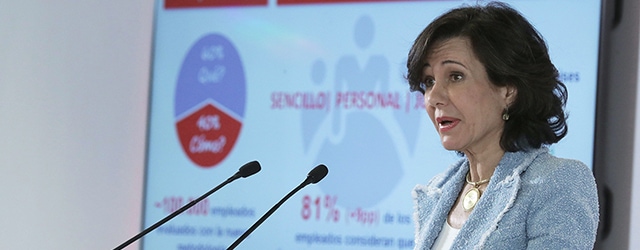Succession and a shake-up at Spain's Santander bank.

Ana Patricia Botín-Sanz de Sautuola O’Shea, 58, is the fourth generation of the Botín clan to lead Spain’s Santander Bank.
The elder daughter of Emilio Botín has long been prepped for her role—she speaks five languages, studied economics in the US, worked for several years at JP Morgan in New York and then held key positions in the family empire from Latin America to Europe.
Emilio, a legendary boss, transformed Santander from a regional entity in the North of Spain into Spain’s largest bank and an international player through an almost never-ending series of important acquisitions at home and abroad, starting with the 1994 purchase of retail bank Banesto.
The strategy of acquisitions has stopped. Since 2014, when Ana’s father died, Santander has undergone an important management overhaul but made only a single relevant acquisition: the rescue of Spanish Banco Popular at the symbolic price of €1 (one euro) in 2017.
The decision, announced in 2018, to appoint the Italian-born investment banker Andrea Orcel to lead the bank suggested continuing acquisitiveness. Orcel had been the young man at Emilio’s side 20 years ago, when Emilio started making the moves to uplift Santander. Orcel, a hugely successful investment banker with great prospects to one day lead a major bank, was expected to ditch UBS to widen horizons and boost the share price for Santander.
From the start, however, it was clear that he was not the best right-hand-man for Ana. A public disagreement on pay packages, with a less public fight about who should participate at the World Economic Forum in Davos, made clear from the outset that the pair was not going to work together well. It was no surprise when the deal collapsed and Orcel did not go to Santander.
The Santander of the future—probably a little less dynamic, a little more stable—will be Ana’s Santander, not Emilio’s.



